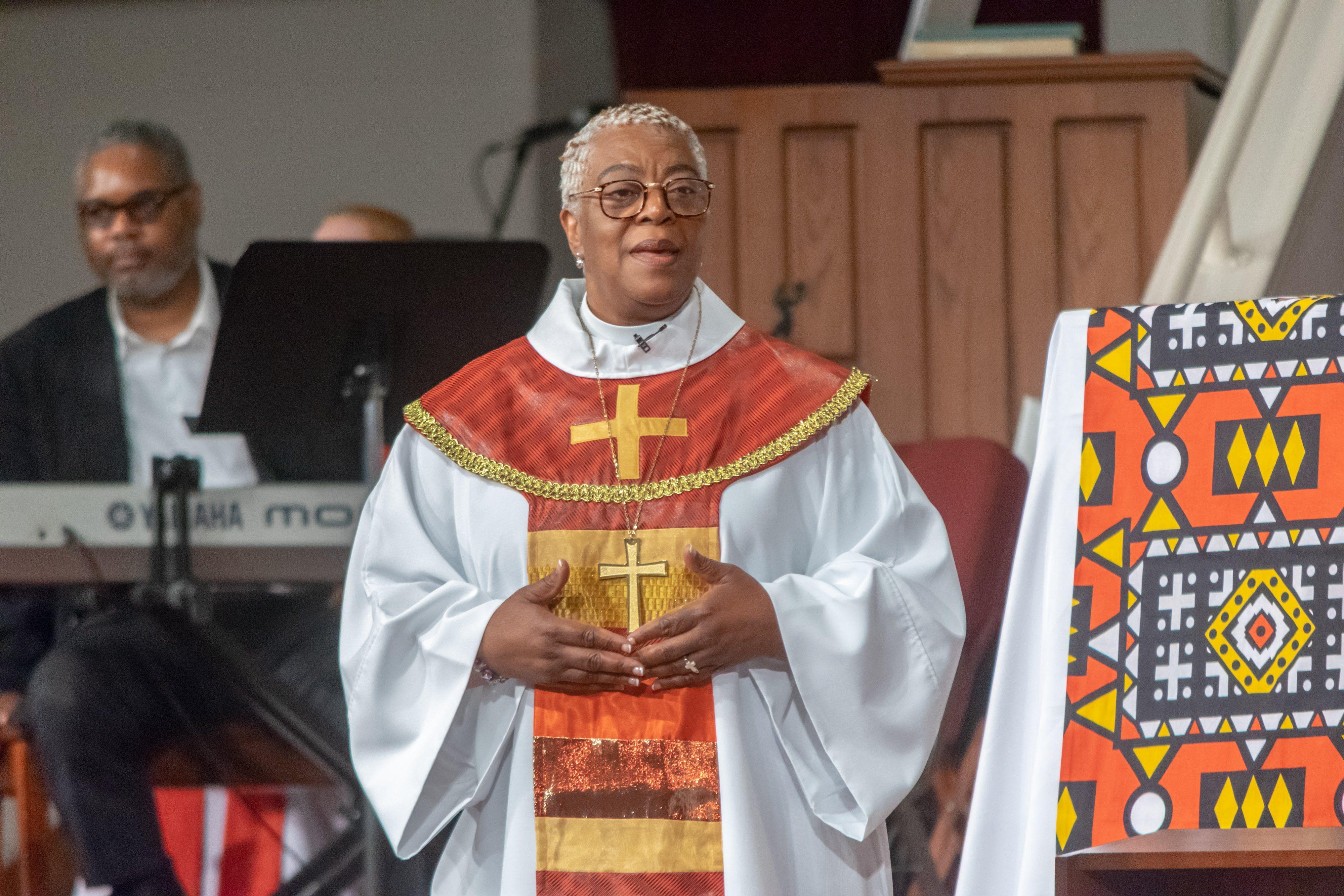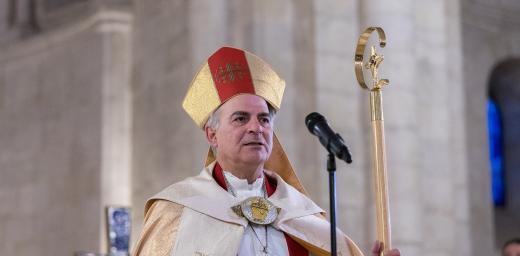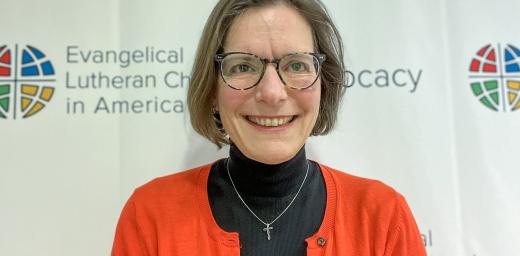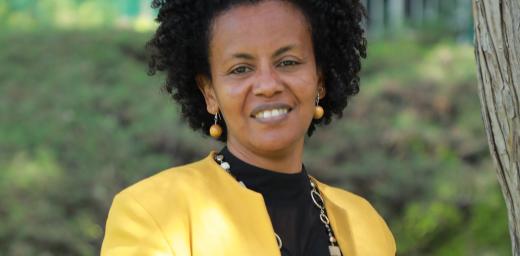Bishop Patricia Davenport: Ministry on the front lines

Bishop Patricia Davenport, ELCA Southeastern Pennsylvania Synod. Photo: Bob Fisher-SEPAComm
The first black woman bishop in the ELCA reflects on her church’s work to combat racism and build a ‘beloved community’
(LWI) - One year ago, Rev. Patricia Davenport was elected as the first African-American woman bishop in the 3.5 million-member Evangelical Lutheran Church in America (ELCA). As head of the Southeastern Pennsylvania Synod (SEPA), she serves Lutheran congregations in a five-county area around the city of Philadelphia, including a wide variety of rural, suburban and urban communities. “We are one of the ELCA’s most diverse synods,” she told Lutheran World Information proudly, as she looked back on her first months in office.
You’re just coming up to a year in your new role as bishop – tell us about the people who make up the church in your part of the U.S.?
We have Liberian congregations, Hispanic congregations, predominantly white and predominantly African descent congregations, and many multicultural congregations. It’s the same among our rostered ministers, where we have 28 pastors of African descent, nearly 10 percent. We have a similar percentage of pastors aged under 40, and nearly 40 percent female pastors, and we are grateful for that diversity.
That ethnic diversity is unusual in the ELCA, which is overwhelmingly white, isn’t it?
The Pew Foundation says we [ELCA] are 96 percent white (https://www.pewforum.org/religious-landscape-study/religious-denomination/evangelical-lutheran-church-in-america-elca/). Our congregations report that seven percent of our worshippers are of African descent, and 91 percent are white. So I tell people the Southeastern Pennsylvania Synod is unique and it’s not just because of me!
Is racism still a problem in the church today?
It is on different levels. Systemically, a denomination that is 96 percent white is not used to listening for the voices and perspectives of persons of color. In our community many of our non-white worshippers are in congregations that serve impoverished areas, and some of our rostered ministers of color don’t receive adequate compensation.
Tackling racism is one of our priorities and we have established an anti-racism team to train churches and show our stakeholders that this is a priority, to tear down barriers that hinder people from full participation.
We work through education, because I believe that when people ‘know’ better they ‘do’ better. When I go to larger congregations that are predominantly white, I say to them: take a look in your office at who is doing which jobs, and see that you have the power to change things.
What have you set as priorities for your ministry?
We’ve just had my first assembly of the Southeastern Pennsylvania Synod and we agreed that combatting racism is a priority. Because we believe in putting your money where your heart is, we put 10,000 dollars into anti-racism training and investment in leadership across the board.
The theme of the assembly was about ‘building beloved community’ and that’s not just about race, but also about poverty and homelessness. We have large numbers of people experiencing food insecurity. We have the opioid crisis causing people to lose their jobs, their health, their families, and sometimes their lives. We need recovery ministries where we can care for people in addiction and their families. The LGBTQIA community is large in our synod, and we continue to have conversations about welcoming all our brothers and sisters, knowing that all are called to proclaim the good news of Jesus Christ.
Like most mainline churches in the global north, the Lutheran church in the U.S. has seen a downturn in numbers – how are you tackling that?
Across the board we are all are experiencing diminishing participation and resources, so at the top of our priority list is helping congregations to understand what are the markers of vital communities of faith. It’s not about ‘butts and bucks and buildings’, which was the old way we measured how the church was growing. Now the question is: What difference are you making in the community? You can have a small church of 15 people, but if that church runs food banks, holds AA [alcoholic anonymous] meetings, hosts arts and music programs for kids, there would be a vacuum in the community if it closed. Other churches with 1,500 people may be ticking the boxes on Sundays, and even doing valuable ministry within their walls, but would the community suffer if they closed?
Not long after your election, Pittsburgh was hit by a synagogue shooting, the deadliest attack ever on the Jewish community in the United States. How would you describe relations with other churches and other faith communities?
I’m very happy to say that my predecessors were already working with Interfaith Philadelphia, which is a collaboration of Christians, Muslims, Jews, Baha’I Sikhs and others. We work together holistically, creating opportunities for teaching, for dialogue, for service, working to promote social harmony. So, for example, when the shooting happened at the Tree of Life, that night we were together at a local synagogue, standing side by side with government officials. The synagogue was packed and we were standing shoulder to shoulder, denouncing, and not just praying together but making a commitment to double down on what we’re doing to combat this type of hatred.
The Lutheran church mantra is ‘marked with the cross of Christ, claimed and gathered and sent for the sake of the world’ and every time we make the sign of the cross, we are reminded that our relationship with God should lead to relationships with our neighbors in need.
How can people of faith be more effective in countering these narratives of hatred, fear and exclusion?
As church we must model ‘a beloved community’, not just in congregations but also in our wider communities, showing what it means to really look beyond a person’s color and creed, to look at their humanity and be able to stand together so that no one among us would suffer. We meet with the Mayor, Police Commissioner and District Attorney to ask how we can work with them to bring down the high crime rates in Philadelphia. They say to us the church should really reclaim her voice, as the first responders to those in need.
We need to open our doors again, seven days a week, so that people have a place to go. It’s not just about practicing our faith but about addressing the needs of others. The Lutheran church mantra is ‘marked with the cross of Christ, claimed and gathered and sent for the sake of the world’ and every time we make the sign of the cross, we are reminded that our relationship with God should lead to relationships with our neighbors in need.
What have been the challenges for you personally in this new job?
When I am presented with something new, I like to see it as an opportunity be a witness in the public square. So, I go down on the Benjamin Franklin Parkway with the Welcome Church to be present with the homeless, because we have to walk the walk. I go with our Hispanic congregations in Hope Park, handing out care kits to people with addictions, to be present with the runaway teens, offering not just a handout but a hand up, providing not just care kits, but prayer and human connections. I’m so grateful for the opportunities to do not only the administrative work, but to be present on the front line as well.
The Lutheran World Federation is a global body that shares the work and love of Christ in the world. In this series, we profile church leaders and staff as they discuss topical issues and set out ideas for building peace and justice in the world, ensuring the churches and communion grow in witness and strength.





